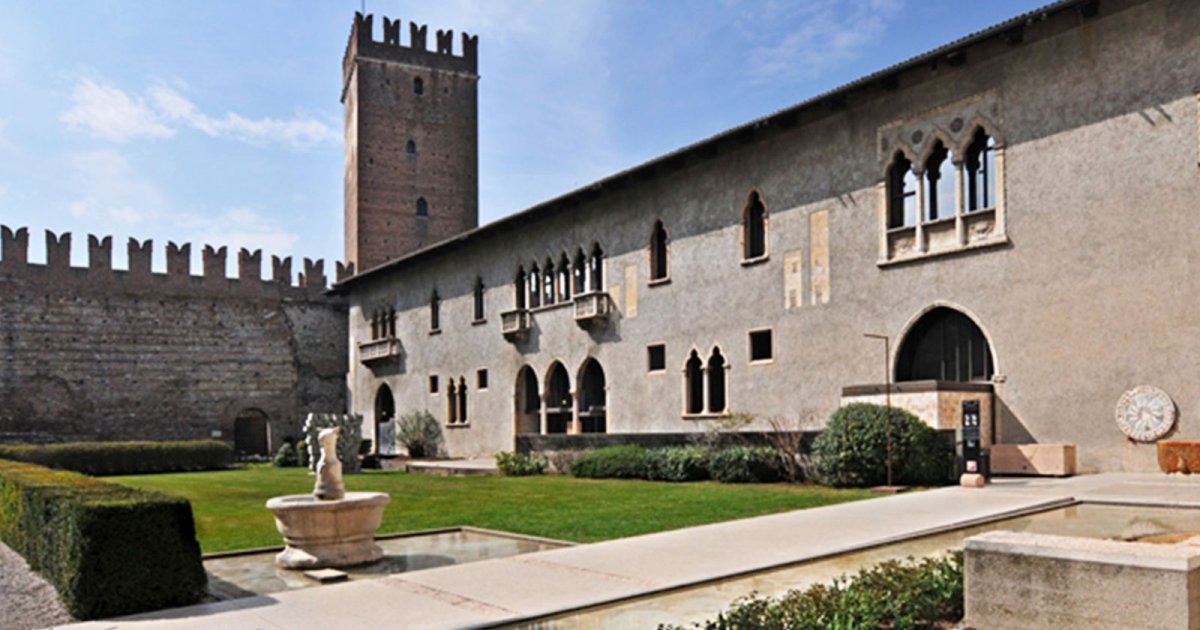CASTELVECCHIO, Interior
 Language: English / USA
Language: English / USA
Visitors to Castelvecchio are met with the huge place-of-arms, with statues, fountains, basins and broad stone walkways among the greenery guiding you into the building.
On the right are the rooms used for temporary exhibitions, while the back of the main building is embellished with windows, loggias and porticoes in Venetian Gothic style. Rising on the left is the austere wall that separates the two courtyards, which the tall keep looks over.
The twenty-nine rooms inside the castle are home to the collections of the Civic Museum.
The exquisitely sensitive approach adopted for displaying the collections in the centuries-old rooms, the choice of the materials and the variety of solutions adopted throughout the exhibitions make Castelvecchio an outstanding example of museography, the branch of architecture specialized in the design and creation of museums.
Next to the main tower, protected by a wooden roof, you can see a striking architectural detail: a stand with the splendid equestrian statue of Cangrande I della Scala, from the Scaliger Tombs (Arche).
We can admire the sculpture from below, in the courtyard, and then take a closer look at it during the museum visit from a window on the first floor.
This magnificent statue, by an unknown fourteenth-century sculptor, shows the best-loved of the lords of Verona astride a horse, covered by an ornate saddlecloth.
Cangrande, a famous condottiero, is depicted in armor: he has removed his helmet, and has an unusually open, engaging smile on his face. Such a lively expression is exceptionally rare in the celebratory sculpture of the 14th century, especially if we consider that this was a statue placed on top of a tomb! The artist who created this masterpiece is unknown, but it was probably a sculptor from Verona, who portrayed the huge popular Cangrande I with consummate skill.
An interesting fact: displayed in the museum are the sword, fragments of fabrics and other objects found in the tomb of Cangrande during an inspection in 1921.
In 2004, an autopsy was carried out on the mummified remains, which showed that the lord of Verona, also known for having welcomed the exiled Dante Alighieri, died at the age of just 38, poisoned by foxglove, perhaps an accidental overdose.



